The Role of Stansted Airport in Climate Change Mitigation

Stansted Airport's Carbon Emissions
Stansted Airport, one of the UK's busiest airports, is playing a significant role in climate change mitigation by actively reducing its carbon emissions. The airport has implemented a series of measures to achieve its ambitious goal of becoming carbon neutral by 2030. These include the use of renewable energy sources, energy-efficient technologies, and sustainable transport options for passengers and staff. The airport has also invested in carbon offsetting projects, which compensate for the emissions it cannot eliminate. Stansted's commitment to reducing its carbon footprint is a significant step towards the aviation industry's broader goal of achieving net-zero emissions by 2050. The airport's efforts demonstrate that it is possible to balance economic growth with environmental responsibility. As such, Stansted Airport serves as a model for other airports worldwide in the fight against climate change.
Stansted Airport's Sustainability Initiatives
Stansted Airport is taking significant strides in mitigating climate change through its sustainability initiatives. The airport has committed to achieving net-zero carbon emissions by 2038, a decade ahead of the UK government's target. This commitment is part of the airport's five-year sustainability strategy, which includes measures such as increasing energy efficiency, reducing waste, and promoting sustainable transport. The airport has already made substantial progress, with a 60% reduction in carbon emissions per passenger since 2008. Furthermore, Stansted is the first UK airport to convert its coffee waste into solid biofuels, demonstrating its innovative approach to sustainability. The airport also encourages passengers to travel to and from the airport using public transport, reducing the carbon footprint associated with car travel. These initiatives highlight Stansted Airport's role as a leader in climate change mitigation within the aviation industry.
Stansted Airport's Energy Efficiency
Stansted Airport is playing a significant role in climate change mitigation through its commitment to energy efficiency. The airport has implemented a series of measures to reduce its carbon footprint, including the use of energy-efficient lighting, heating, and cooling systems. It has also invested in renewable energy sources, such as solar panels, to power its operations. Furthermore, Stansted Airport has introduced electric vehicles into its ground fleet to reduce emissions. The airport's commitment to energy efficiency extends to its buildings, with the design and construction of new facilities incorporating sustainable materials and technologies. These initiatives have resulted in significant energy savings and a reduction in greenhouse gas emissions, demonstrating Stansted Airport's commitment to environmental responsibility and its role in combating climate change.
Stansted Airport's Waste Management
Stansted Airport has taken significant strides in waste management, playing a crucial role in climate change mitigation. The airport has implemented a robust waste management strategy, focusing on reducing, reusing, and recycling waste. It has set ambitious targets to recycle 70% of its waste by 2020, a goal it has already surpassed. The airport has also invested in advanced waste sorting and processing facilities, ensuring that waste is disposed of in the most environmentally friendly manner possible. Food waste is converted into biofuel, while other waste is either recycled or sent to a waste-to-energy plant. The airport's commitment to waste management has resulted in a significant reduction in greenhouse gas emissions, contributing to the global fight against climate change. Stansted Airport's waste management strategy serves as a model for other airports and industries, demonstrating that sustainable practices can be integrated into daily operations without compromising efficiency or profitability.
Stansted Airport's Water Conservation
Stansted Airport has taken significant strides in water conservation, playing a crucial role in climate change mitigation. The airport has implemented a comprehensive water management strategy, focusing on reducing water consumption and promoting recycling. The strategy includes the installation of water-efficient fixtures in restrooms, rainwater harvesting systems, and regular monitoring of water usage. The airport also encourages passengers and staff to use water responsibly. These measures have resulted in a significant reduction in water usage, contributing to the airport's sustainability goals. Stansted's commitment to water conservation not only reduces its environmental footprint but also sets a positive example for other airports worldwide. This initiative is part of a broader commitment by Stansted Airport to reduce its overall environmental impact, demonstrating that airports can be part of the solution to climate change.
Stansted Airport's Noise Pollution Control
Stansted Airport has been proactive in its approach to noise pollution control, playing a significant role in climate change mitigation. The airport has implemented stringent noise restrictions and monitoring systems to ensure minimal disturbance to the surrounding communities. The use of advanced technology, such as quieter aircraft and optimized flight paths, has significantly reduced noise levels. Furthermore, Stansted has introduced a Noise Insulation Scheme, offering financial assistance for noise insulation to local residents. The airport also engages in regular dialogue with local communities and stakeholders to address concerns and improve its noise management strategies. These efforts demonstrate Stansted Airport's commitment to reducing its environmental impact and contributing to global climate change mitigation. The airport's noise pollution control measures not only enhance the quality of life for local residents but also set a benchmark for other airports worldwide.
Stansted Airport's Green Building Practices
Stansted Airport, one of the UK's busiest airports, is making significant strides in climate change mitigation through its green building practices. The airport has implemented a series of sustainable initiatives, including the use of energy-efficient materials in construction, installation of solar panels, and the implementation of rainwater harvesting systems. These practices not only reduce the airport's carbon footprint but also contribute to its overall sustainability goals. The airport's commitment to green building is evident in its new arrivals terminal, which is designed to achieve a BREEAM 'Excellent' rating. This rating is a globally recognized benchmark for sustainability in buildings, highlighting Stansted's dedication to environmental responsibility. The airport's green building practices are a crucial part of its broader strategy to achieve net-zero carbon emissions by 2050. Stansted Airport's efforts demonstrate the significant role that airports can play in mitigating climate change, setting a positive example for other airports worldwide.
Stansted Airport's Climate Change Policies
Stansted Airport has been proactive in addressing climate change, implementing policies that aim to reduce its carbon footprint. The airport has committed to achieving net-zero carbon emissions by 2030, a decade ahead of the UK government's target. This commitment is part of the airport's five-year sustainability strategy, which includes measures such as increasing energy efficiency, transitioning to renewable energy sources, and promoting sustainable travel among employees and passengers. The airport is also investing in electric vehicles and charging infrastructure to reduce emissions from ground operations. Furthermore, Stansted is working with airlines to encourage the use of newer, more fuel-efficient aircraft. These initiatives demonstrate Stansted Airport's commitment to playing a significant role in climate change mitigation. The airport's efforts serve as a model for other airports and industries, showing that economic growth and environmental responsibility can go hand in hand.
Stansted Airport's Impact on Local Environment
Stansted Airport, one of the UK's busiest airports, plays a significant role in climate change mitigation. Despite its contribution to carbon emissions, the airport has implemented several measures to reduce its environmental impact. It has invested in energy-efficient technologies, such as LED lighting and electric vehicles, to reduce its carbon footprint. The airport also encourages airlines to use newer, more fuel-efficient aircraft. Furthermore, Stansted Airport has implemented a comprehensive recycling program, reducing waste and promoting sustainability. However, the airport's expansion plans have raised concerns about increased carbon emissions. To address this, Stansted is committed to achieving net-zero carbon emissions by 2050, aligning with the UK's climate change goals. While the airport's operations inevitably impact the local environment, its proactive measures demonstrate a commitment to mitigating climate change. The challenge lies in balancing economic growth with environmental responsibility, a task that Stansted Airport is actively tackling.
Stansted Airport's Role in Global Climate Change Mitigation
Stansted Airport, one of the busiest airports in the UK, is playing a significant role in global climate change mitigation. Recognizing the environmental impact of aviation, the airport has implemented several strategies to reduce its carbon footprint. It has achieved carbon neutral status for its infrastructure operations, a testament to its commitment to sustainable practices. The airport has also invested in energy-efficient technologies, such as LED lighting and electric vehicles, to reduce its energy consumption. Furthermore, Stansted Airport is actively promoting sustainable travel among its passengers, encouraging them to use public transport to reach the airport. It is also part of the Sustainable Aviation coalition, working towards a cleaner, quieter, and smarter future for the aviation industry. Stansted Airport's efforts demonstrate that it is possible for major transport hubs to operate sustainably, contributing significantly to global climate change mitigation.
Our Latest Blog Posts

Stansted Airport: A Guide to the Quality Management Process
Stansted Airport prioritizes quality management, ensuring efficient operations and passenger satisfaction. This involves regular audits, process optimization, staff training, and adherence to inter ...
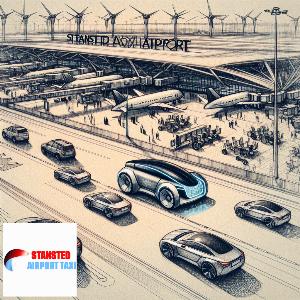
The Impact of Airline Adaptability on Stansted Airport
The adaptability of airlines at Stansted Airport has significantly impacted its operations. Enhanced flexibility has improved flight schedules, increased passenger capacity, and boosted revenue, po ...

Stansted Airport: A Guide to the Interview Process
Navigating the interview process at Stansted Airport can be challenging. It involves rigorous security checks, competency-based questions, and a thorough assessment of your skills. Preparation and ...
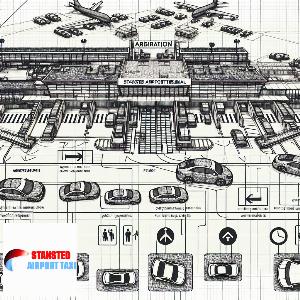
Stansted Airport: A Guide to the Arbitration Process
Stansted Airport's arbitration process is a structured method for resolving disputes. It involves neutral arbitrators who review the evidence and make decisions that are legally binding. This guide ...

The Role of Stansted Airport in Conflict Resolution
Stansted Airport plays a crucial role in conflict resolution by facilitating diplomatic travels. It serves as a neutral meeting ground for international negotiations, aiding in the peaceful resolut ...

The Impact of Airline Disruption on Stansted Airport
Airline disruptions at Stansted Airport have significant impacts, causing flight delays, cancellations, and passenger dissatisfaction. These disruptions also affect airport operations, leading to f ...

Stansted Airport: A Guide to the Review Process
Stansted Airport's review process is comprehensive, ensuring passenger satisfaction. It involves evaluating services like check-in, security, amenities, and cleanliness. Feedback is collected and a ...
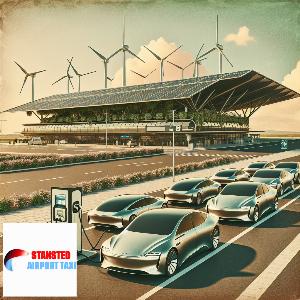
The Role of Stansted Airport in Green Technology Adoption
Stansted Airport plays a pivotal role in adopting green technology, leading the aviation industry towards sustainability. It actively implements eco-friendly initiatives, such as energy-efficient s ...

The Impact of Airline Personalization on Stansted Airport
Airline personalization at Stansted Airport has significantly enhanced passenger experience. Tailored services, from personalized travel updates to customized in-flight entertainment, have increase ...

The Role of Stansted Airport in Waste Management
Stansted Airport plays a crucial role in waste management, implementing robust strategies to minimize waste. It prioritizes recycling and reusing materials, significantly reducing landfill waste an ...

Stansted Airport: A Guide to the Transfer Process
Stansted Airport offers a seamless transfer process for travelers. With clear signage, dedicated transfer desks, and efficient shuttle services, it ensures a stress-free transition between flights. ...

The Impact of Airline Digitalization on Stansted Airport
Digitalization in airlines has significantly impacted Stansted Airport, enhancing operational efficiency and customer experience. It has streamlined processes, reduced waiting times, and improved b ...

Stansted Airport: A Guide to the Induction Process
Stansted Airport's induction process is a comprehensive guide for new employees. It includes safety training, familiarization with airport operations, and customer service standards. This process e ...

Stansted Airport: A Guide to the Orientation Process
Stansted Airport, a bustling hub for international travel, offers a streamlined orientation process. With clear signage, helpful staff, and efficient services, navigating through check-in, security ...

The Role of Stansted Airport in Pollution Control
Stansted Airport plays a crucial role in pollution control, implementing measures like efficient energy use, waste management, and noise reduction. Its commitment to environmental sustainability se ...

Stansted Airport: A Guide to the Feedback Process
Stansted Airport values passenger feedback for continuous improvement. The process involves sharing experiences through their website or customer service desks. Feedback is analyzed and used to enh ...
Blogs Pages
The Role of Stansted Airport in Research and Development

Blog about The Role of Stansted Airport in Research and Development...
The Impact of Airline Competition on Stansted Airport

Blog about The Impact of Airline Competition on Stansted Airport...
The Impact of Airline Transformation on Stansted Airport

Blog about The Impact of Airline Transformation on Stansted Airport...
The Role of Stansted Airport in Habitat Preservation

Blog about The Role of Stansted Airport in Habitat Preservation...
The Impact of Airline Bankruptcies on Stansted Airport

Blog about The Impact of Airline Bankruptcies on Stansted Airport...
The Role of Stansted Airport in Clean Energy Production

Blog about The Role of Stansted Airport in Clean Energy Production...
The Role of Stansted Airport in Sustainable Transport

Blog about The Role of Stansted Airport in Sustainable Transport...
Stansted Airport: A Guide to the Examination Process
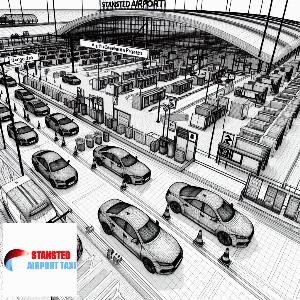
Blog about Stansted Airport: A Guide to the Examination Process...
Stansted Airport: A Guide to the Audit Process
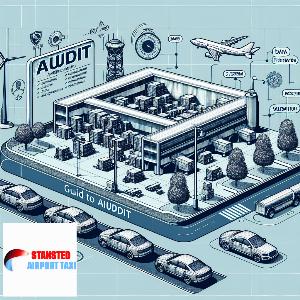
Blog about Stansted Airport: A Guide to the Audit Process...




